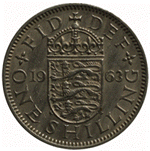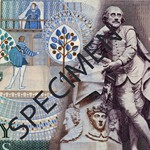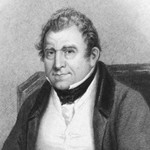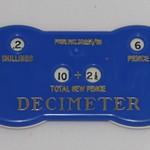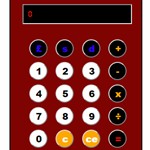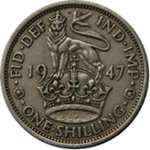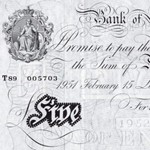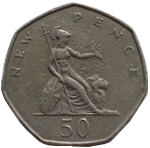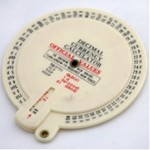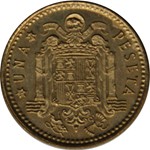Pounds shillings and pence - Ireland
The Republic of Ireland (Eire) used the same currency as the UK until Ireland joined the Euro in 2002. Before 1971 both countries used pounds, shillings and pence.
The Irish coins had the same denominations and values as the UK. Ireland adopted decimal currency on the same day as the UK, 15 Feburary 1971.
These are the pounds, shillings and pence coins which Ireland used up to Decimalisation.

Farthing
1/4d
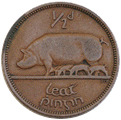
Half Penny
1/2d

Threepence
3d

Sixpence
6d
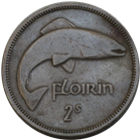
Two Shillings
2s or 2/-
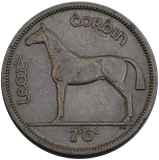
Half Crown
2s 6d or 2/6
The new coins were first issued on 12 December 1928[1]. They replaced English pounds, shillings and pence. Up to that point there had been some suggestions that Ireland should adopt decimal currency. Another suggestion was to part decimalise and have ten rather than twleve pence in a shilling. However, when the new coins were issued they were similar in size and shape and identical in value to the equivalent UK coins.
The designs were different. On the observe of each coin (the back to most people), was the Irish harp symbol. On the reverse were pictures of birds and animals. It was a forward thinking modern design.
The designs were chosen by a committee headed by Irish poet and senator, Y B Yeats. They chose designs by the British sculptor, Percy Metcalfe. The theme was birds and beasts.[2]
The designs were:
- Farthing - woodcock
- Halfpenny - sow with piglets
- Penny - hen with chicks
- Threepence - hare
- Sixpence - Irish wolfhound
- Shilling - bull
- Florin (two shillings) - salmon
- Halfcrown - Irish hunter (horse)
The intention was to include animals that symbolised the wealth of Ireland. They did not please everyone. Before the coins were in circulation Mr W Duffy asked in the Dail (the Irish Parliament) whether Christian symbols might not have been more appropriate.[3]
The new coins also gave licence to a joke or two. A journalist overheard a Dublin tram conductor ask a passenger for a bacon and egg - one penny (hen) and one halfpenny (pig). He also related a joke that the Irish pound was eight horsepower (eight halfcrowns). [4]
Irish visitors to Belfast had trouble with the new coins. Belfast tram conductors refused to take them, although their value was the same as the UK equivalent coins. The issue was not resolved until 1931.
Unlike the UK coins, the Irish threepence and sixpence were nickel instead of silver. The shilling, florin and halfcrown were silver. The two nickel coins were changed to cupro-nickel in 1942. No silver coins were minted after 1942. When the Irish Mint resumed production in 1951 all 'silver coins' were cupro-nickel. The only other change was to the wording on the obverse (harp side) in 1939. After 1939 it simply said Eire, reflecting Ireland's new status as a republic.
The coins continued virtually unchanged until 1971, when Ireland switched to decimal coinage on the same day, 15 February 1971, as the UK.
As in the UK, the shilling and florin continued in the decimal system with values as 5p and 10p. The farthing and halfpenny were withdrawn on 1 August 1969 and the halfcrown on 1 January 1970.
As in the UK, the threepence and penny were allowed to continue after 15 Feburary 1971, but were withdrawn later in the year, once the transition to decimal was complete. Unlike in the UK, the Irish sixpence was withdrawn after the transition to decimal currency in 1971.
References
[1] 'New Free State coins' published in The Irish Times 12 December 1928, page 7.
[2] 'Design Moment. Free State Coins c1928' by Bernice Harrison, published in The Irish Times 31 December 2016, page B4.
[3] 'Free State coins' published in The Irish Times 6 August 1927, page 7.
[4] 'The new coins' published in The Irish Times 25 January 1929, page 4.


